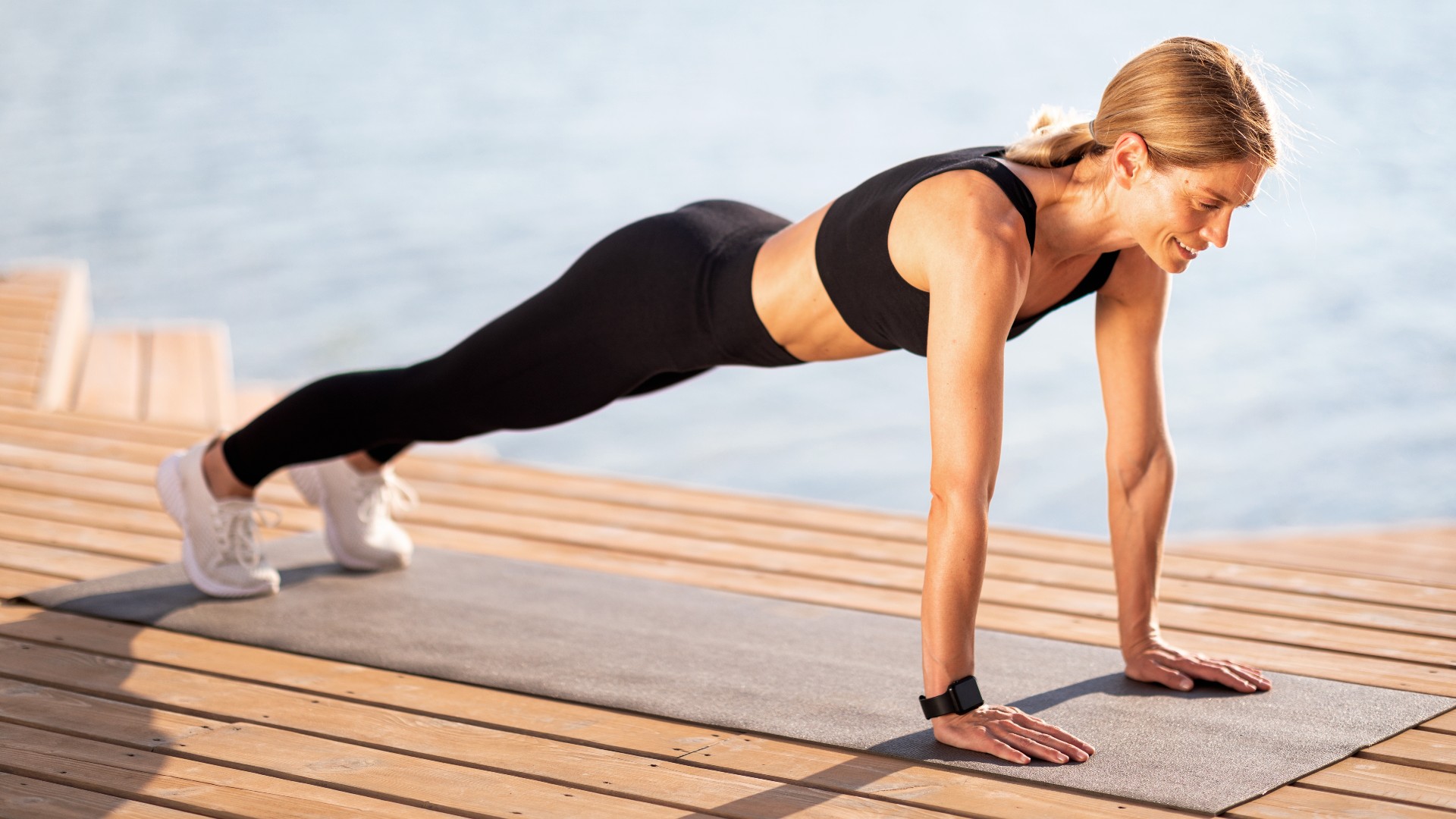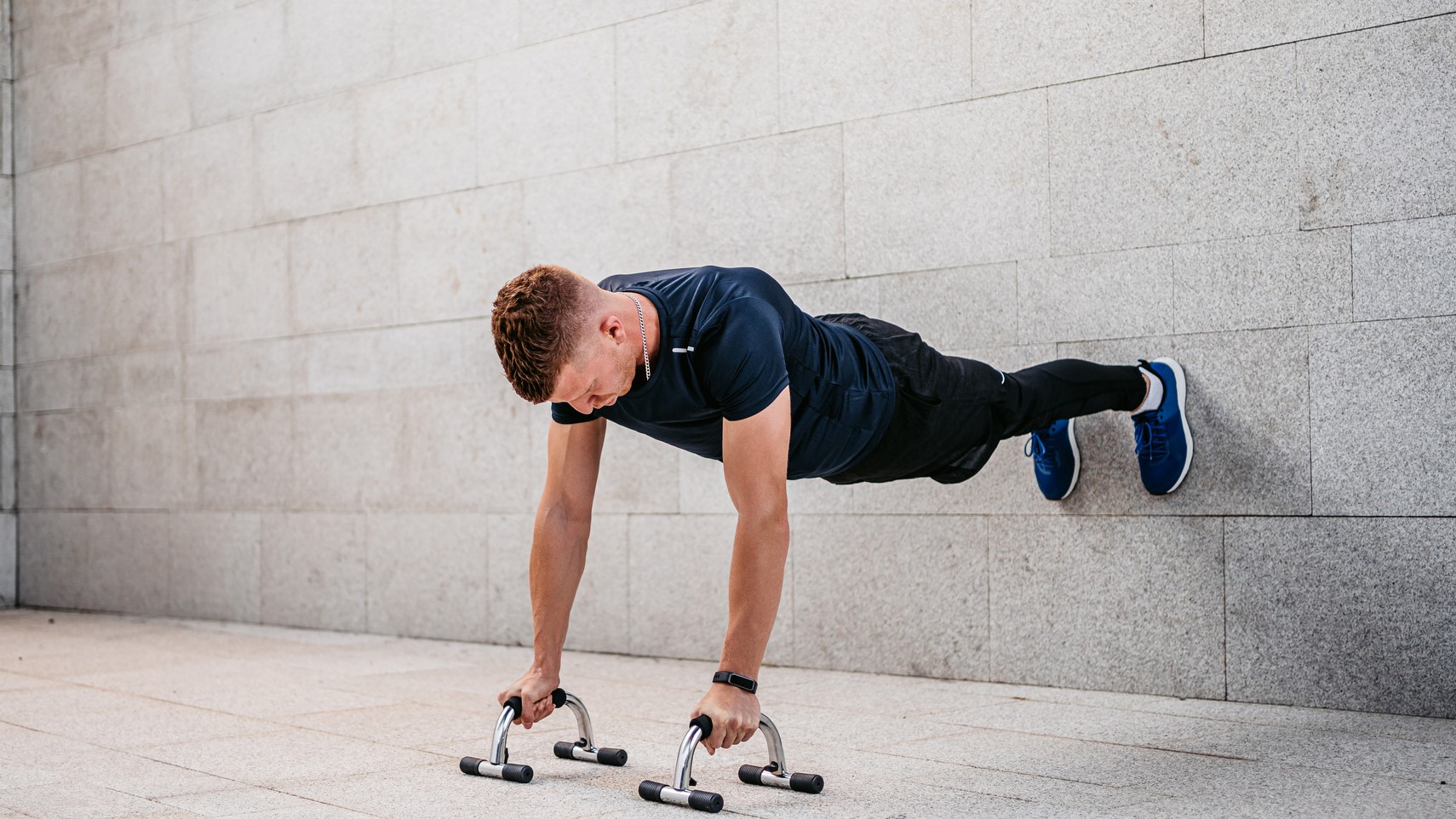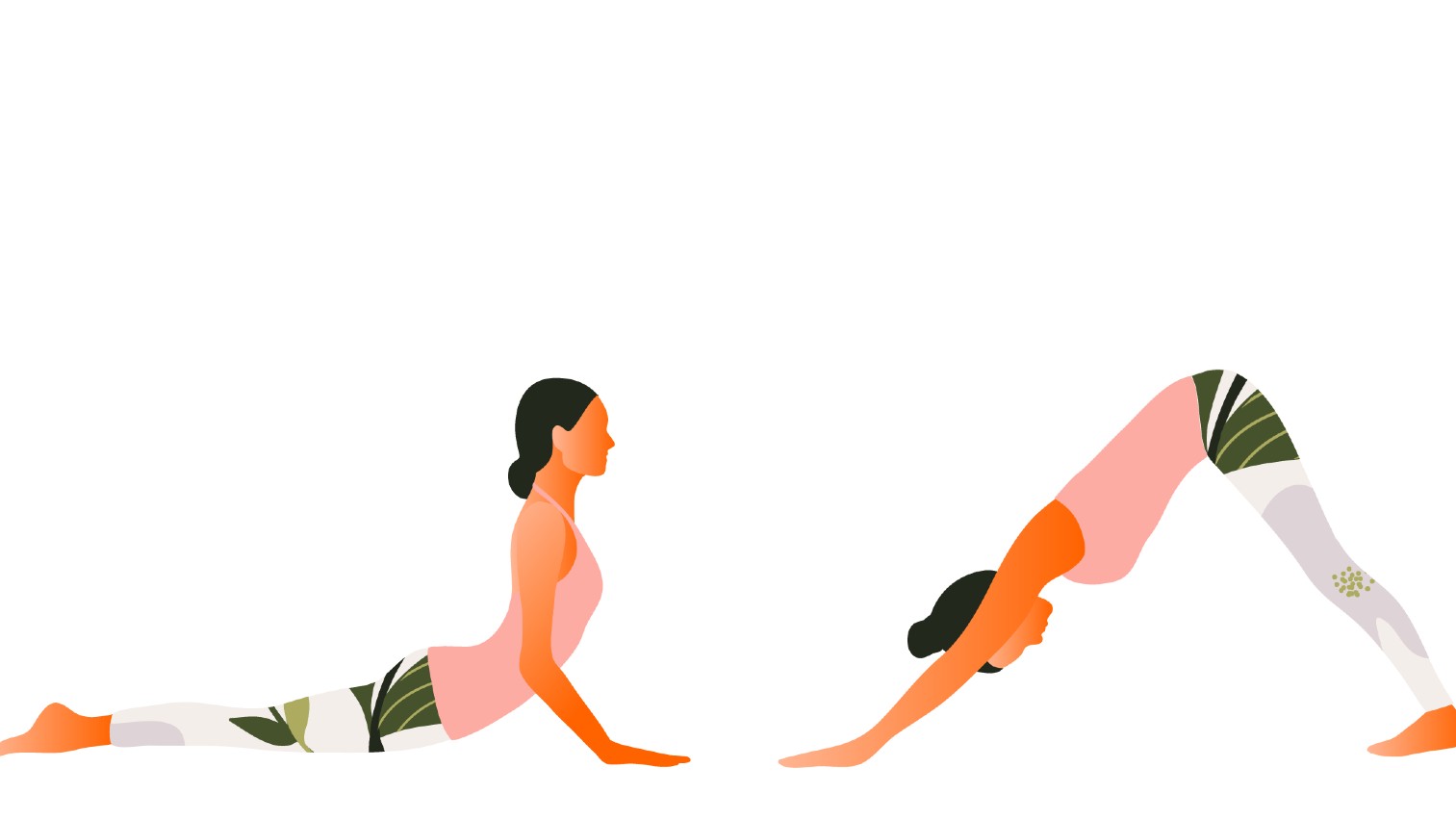
Has your current chest and shoulder workout gone stale? Revive limp workout routines by adding this three-move bodyweight shoulder workout to your arsenal of upper-body exercises.
If you already adopt hypertrophy or strength training, you’ll be well-versed in the best ways to strengthen and sculpt your muscles and how much work it takes. But regardless of your experience level, it’s worth a quick reminder that workouts must be two things: consistent and progressive (known in the fitness industry as progressive overload) to challenge your muscles properly over time.
What we mean is that you’ll need to repeat and adapt this three-exercise chest and shoulder workout to notice improvements over time. But whether you're just dipping your toes (or shoulders) into upper body workouts or you're more developed with your training plan, this one is sure to fire up your muscles.
Now, on to the exercises.
What is the no weights 3-move chest and shoulder workout?

There’s plenty of opportunity to exercise with weights, but many people find it harder to program challenging and effective bodyweight workouts without them, which is where we come in.
The three chest and shoulder exercises below form a giant set. A giant or cluster set means a combination of three or more exercises done together, back-to-back. Aim for maximum reps of wall walks in the first minute, then move straight to the dive bomber push-ups in the next. Finish with the decline push-ups in the third before taking a one-minute rest and beginning a new round. Try 4-5 rounds.
EMOM (every minute on the minute):
Get instant access to breaking news, the hottest reviews, great deals and helpful tips.
Minute 1: Wall walks
Minute 2: Dive bomber push-ups
Minute 3: Decline push-ups
Minute 4: Rest
Most of the best ways to build muscle without lifting heavier weights require getting the creative juices flowing. You could increase strength, build leaner muscle and improve muscular endurance by performing high reps of these three exercises with little rest.
But remember to warm up properly, stretch afterward and give your muscles recovery time between sessions.
1. Wall walks

The full-body exercise develops strong shoulders and core muscles while activating most major muscle groups. Focus on controlling the move without rushing, and aim for at least 6 reps. Avoid dipping your hips in the push-up position.
How:
- Start in a handstand position facing the wall.
- Begin by slowly walking your hands forward, away from the wall, and, at the same time, walk your feet down the wall.
- Keep going until you reach a push-up position. Keep your core engaged, hips aligned with your shoulders and back flat.
- Pause, then walk your feet back up the wall as you walk both hands toward the wall again.
If you don’t achieve the full range of motion, practice moving as far as you can. As a progression, practice handstand push-ups instead. Starting in the same position, bend your elbows and lower your head to the floor below you, then push back into your handstand position.
2. Dive bomber push-up

The exercise looks like a downward-facing dog to an upward-facing dog transition used in yoga. It takes an existing amount of upper body strength, so practice first on your knees using the steps below. Only lift your knees when you feel comfortable, and keep your elbows locked close to your body to protect your joints.
How:
- Start in a downward-facing dog with your fingers pointed forward and your core engaged. Imagine turning your hands slightly outward to roll your elbows inward and look between your feet.
- Begin bending your elbows and lowering your forearms toward the mat.
- Drive your body weight forward between your arms and push upward as your hips hover just above the floor into an upward-facing dog, arms straight.
- Reverse the sequence of movement back to downward dog. You could add a child’s pose or a plank between, or use your knees.
3. Decline push-up

The push-up variation elevates your lower body to emphasize the weight in your upper body, torching the pecs, deltoids and triceps in the process. Keep your elbows tight to your body and lower your chest with control.
How:
- Place the balls of your feet on a sturdy bench or box — you could also use your sofa if you exercise at home.
- Start in a push-up position with your core, shoulders and glutes engaged. Your shoulders should stack over your wrists, and your hips align with your shoulders.
- Bend your elbows and lower until your chest reaches the floor, pause, then explosively push back up to the starting position.
Benefits of bodyweight chest and shoulder exercises
Bodyweight upper body exercises strengthen your bones, muscles and joints and improve overall mobility and range of motion.
We strongly believe that anyone (who can) should be able to push and pull their weight and focus on strengthening their mind-muscle connection before learning to lift weights.
Doing so prepares your body for weightlifting, helping improve posture, functional movement and core stability; this is particularly important when it comes to engaging your chest and shoulders, as many shoulder injuries we’ve seen come from a lack of proper engagement and or shoulder positioning.
Each exercise also develops stronger core muscles and boosts flexibility, especially during wall walks and dive bomber push-ups. Yogis could have a slight advantage here, but if you repeat these exercises often enough, you’ll soon reap the rewards.
More from Tom's Guide
- I'm a personal trainer and this is the biggest workout mistake I see in the gym
- Forget sit-ups, this 3-move abs workout chisels concrete core muscles in just 15 minutes
- I walked 8,000 steps with the Apple Watch 9 and the Garmin Forerunner 265, here's which was more accurate.

Sam Hopes is a level 3 qualified trainer, a level 2 Reiki practitioner and fitness editor at Tom's Guide. She is also currently undertaking her Yoga For Athletes training course.
Sam has written for various fitness brands and websites over the years and has experience across brands at Future, such as Live Science, Fit&Well, Coach, and T3.
Having coached at fitness studios like F45 and Virgin Active and personal trained, Sam now primarily teaches outdoor bootcamps, bodyweight, calisthenics and kettlebells.
She also coaches mobility and flexibility classes several times a week and believes that true strength comes from a holistic approach to training your body.
Sam has completed two mixed doubles Hyrox competitions in London and the Netherlands and finished her first doubles attempt in 1:11.
